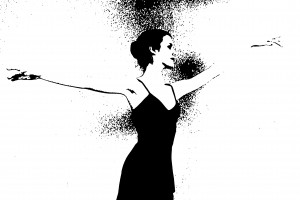We are pleased to have Marika Baxter, PT, as our guest contributor this month. Marika has extensive experience working with dancers, and her article on the “Phases of Healing” is great information to share regarding what happens in your body when you have an injury, and how to integrate that with returning to happy, healthy dancing.
After Marika’s article, you’ll find a few additional words from me, on something we’ve mentioned before in our Wellness column, but which bear mentioning again — keeping the rest of your body in shape while you’re recovering from an injury.
The Holidays are here, so enjoy — happy “Nutcracker”, if that’s a part of your dance life, and “talk” to you again soon!
Jan
Jan Dunn, MS
___________________________________________________________________
Phases of Healing
by Marika Baxter, PT, MSPT, OCS
 If you’ve ever had an injury that’s sidelined you from dancing, the most pressing question you may have is “How long will it take to recover and when will I be dancing again?” Though every injury and dancer is different, the way our body heals does follow the same pattern. Understanding the phases of healing and how they relate to getting back in the studio can help you in the journey back to health. The important thing to remember is that healing is a process, not an event!
If you’ve ever had an injury that’s sidelined you from dancing, the most pressing question you may have is “How long will it take to recover and when will I be dancing again?” Though every injury and dancer is different, the way our body heals does follow the same pattern. Understanding the phases of healing and how they relate to getting back in the studio can help you in the journey back to health. The important thing to remember is that healing is a process, not an event!
Phase I – The Inflammatory Phase
The first phase of healing is called the inflammatory phase. You’re in the studio rehearsing for a performance and as you step into a turn your concentration lapses and your ankle rolls. You feel pain on the outside of your ankle and when you try to continue dancing your ankle feels weak and is too painful to put weight on. Luckily you put ice on it right away but by the end of the night your ankle is swollen and bruised.
Whether the injury is major, like this story of an ankle sprain, or just a small cut or bruise, the first thing the body will experience is inflammation. You can think of the inflammatory phase as the clean up phase. In the first 24-48 hours, the body will send cells to the area to help remove injured tissue. The body will also begin laying down new cells to form a blood clot, almost like an internal scab. This helps keep the injury protected as it begins to heal.
During the inflammatory phase, there are a number of things you may be feeling. It’s common to have pain, swelling and possibly warmth and redness in the area. Depending on the severity of the injury, you may have difficulty dancing, walking or moving the body part. In this first phase of healing, you may need to modify what you’re doing in class or rehearsals to allow for healing to begin. In some cases you may need to take a break from dancing so the body can start the healing process.
In these first few days after an injury, the best thing to do is PRICED: Protect, Rest, Ice, Compress, Elevate, Diagnose. You can see the previous dance wellness article on 4dancers.org entitled “Keeping Dancers Dancing: “Help I Have An Injury – What Do I Do?” for more information on PRICED.
Phase II – The Repair Phase [Read more…]






